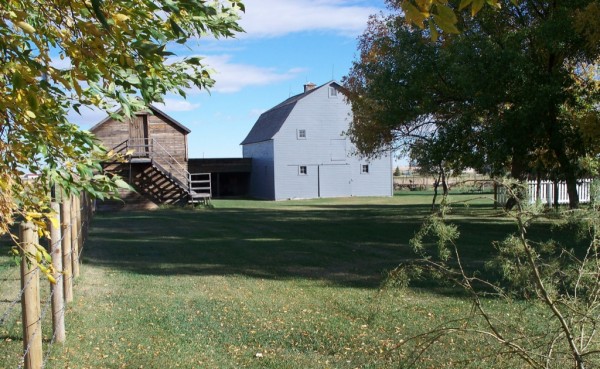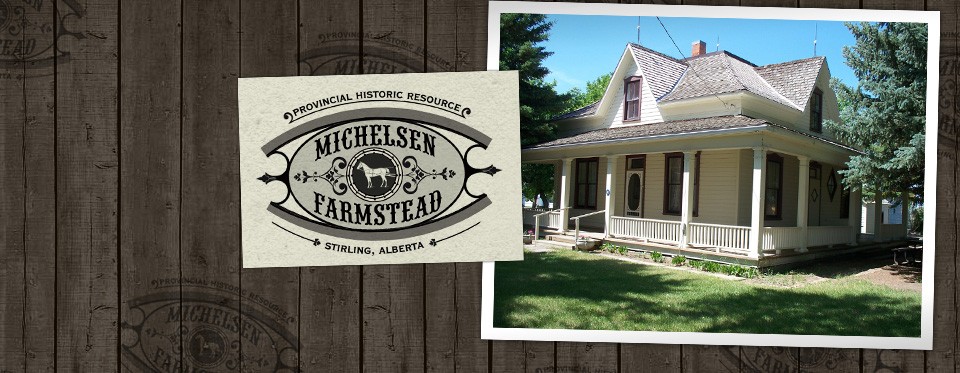Michelsen Farmstead
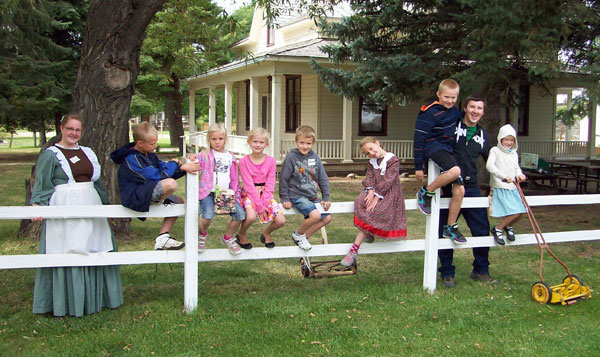
The Michelsen Farmstead Provincial Resource is located on 1.5 acres of land inside the Village of Stirling at 533 2nd Avenue.
General Information
Open: Monday to Friday, 9am – 4:30pm for June, July and August and by appointment during other times of the year.
Cost: FREE. Group bookings are available. Donations are gratefully accepted.
There is a picnic area available if the group would like to arrange for lunch or a break before heading out.
Phone: 403-315-0995
Email: l.nilsson@stirling.ca
About the Michelsen Farmstead
The 1904 family home, which was owned by Andreas and Kirsten Michelsen, was remodelled to the present style in 1912. The home has been restored on the main floor to represent life between the 1900s and 1930s. Displays include original artifacts from the Michelsen family and other local residents. The original large hip-roof barn contains display of tack, livestock tools and farm equipment. A buggy, several wagons and larger farm implements are also on the grounds. Other buildings include a blacksmith shop, coal shed/summer kitchen and a two story granary which doubled as a summer bedroom for the boys.
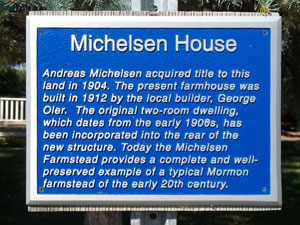 The Michelsen Farmstead is run and maintained by the Stirling Historical Society. The mission of the Stirling Historical Society is to collect, preserve, restore, exhibit and interpret artifacts which represent rural settler lifestyles of Southern Alberta. A special focus is made on the influence of The Church of Jesus Christ of Latter-Day Saints (Mormons) on the development of Stirling and the surrounding region from the 1899 – 1939
The Michelsen Farmstead is run and maintained by the Stirling Historical Society. The mission of the Stirling Historical Society is to collect, preserve, restore, exhibit and interpret artifacts which represent rural settler lifestyles of Southern Alberta. A special focus is made on the influence of The Church of Jesus Christ of Latter-Day Saints (Mormons) on the development of Stirling and the surrounding region from the 1899 – 1939
History
From the very beginning it was clear that the new settlement of Stirling was expected to be economically self-sufficient. Allotment of 2.5 acre building plots were designed specifically so the individual owners could provide their own food. Equally important, but sometimes overlooked, was the expectation that the newly established village should be a community in the fullest sense. This must of course, include cultural outlets to relieve the monotony of daily labour.
The ability to provide for themselves culturally as well as physically, contributed to the strength and self-reliance that was a sustaining force for Stirling throughout the years.
Entertainment at the turn of the century had to be locally provided, for travel was slow and difficult. House parties were the norm for the early settlers. Friends would gather at various homes for visiting, card playing, or spontaneous music. Locals would play the bones for rhythm, or the violin for a quick dance, others were known for singing.
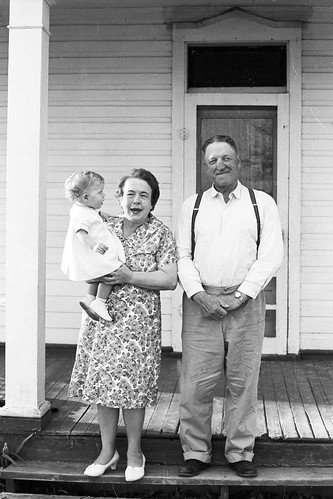 Elva, Shannon & Sirn Michelsen 1966
Elva, Shannon & Sirn Michelsen 1966
The Michelsen home was a favorite gathering place for many years, and the family hosted my dances typical of those house parties. Though by today’s standards the space was limited, moving furniture and rolling back rugs in the parlor and dining rooms created enough room to dance one square. The fiddler would lean against the doorway between the two rooms and play whatever the dancers desired. If the group was larger and the weather was good, the dancers were moved to the loft of the barn. Michelsen barn dances were popular for more than 75 years.
As the time went on, the dayliner to Lethbridge offered new opportunities to the residents of Stirling and the surrounding area. But the Michelsen Farmstead remained a favorite gathering place – though its focus had changed slightly. Farmers from the surrounding area would often drive their teams to Stirling. They would then catch the train to Lethbridge leaving their team and wagon at the Michelsen farm, sometimes for several days.
The popularity of the farm was not restricted to the adults. Youngsters found the hay loft to be a perfect place to “sleepover” and the young Michelsen boys carried on endless “Cops and Robbers” shoot outs with their friends. The Michelsen boys were the preferred “bad guys” in these games. This latter activity was a source of great concern to one neighbour who predicted a dark future for young boys who spent so much of their time in such “unlawful play”. It is one of life’s little ironies that Glen Michelsen was the first Stirling native son to join the RCMP and two of his three brothers followed his example by making law enforcement their career.
The continued importance of the Michelsen Farmstead can still be seen today even though no Michelsens now reside in the home. In 2001 the Andreas Michelsen Homestead was declared a Provincial Historic Resource with the house and outbuildings restored to the period of the 1930’s.
